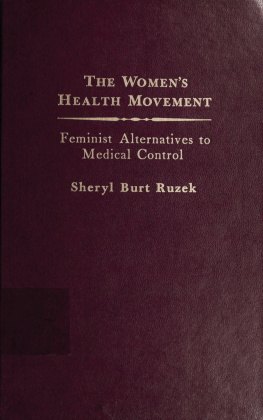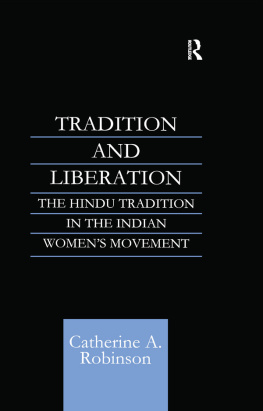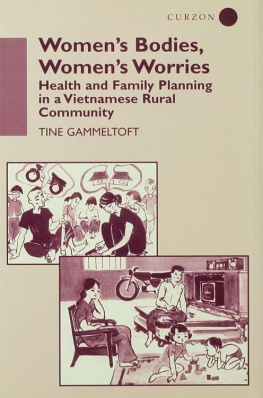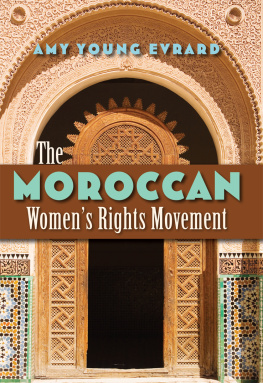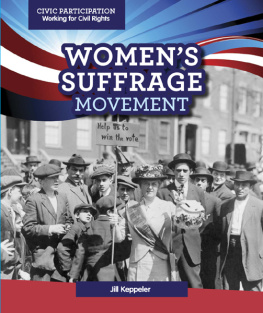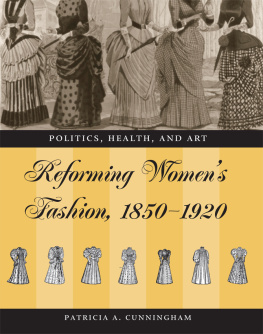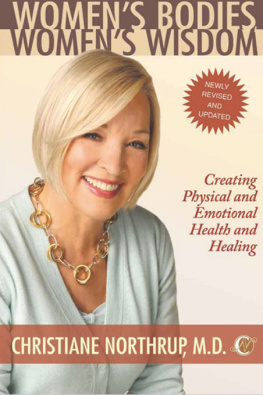
Ruzek, Sheryl
The Womens Health Movement.
Bibliography: p.
Includes index.
1. Womens health services United States. 2. Womens health services Political aspects United States. 3. Feminism United States. I. Title. RG14.U6R88 1978 362.1 7815483 ISBN O-O3-O41436-9
PRAEGER PUBLISHERS
PRAEGER SPECIAL STUDIES
383 Madison Avenue, New York, N.Y. 10017, U.S.A.
Published in the United States of America in 1978
by Praeger Publishers,
A Division of Holt, Rinehart and Winston, CBS, Inc.
89 038 987654321
1978 by Praeger Publishers
All rights reserved
Printed in the United States of America
epub version 1.0
For Arlene Kaplan Daniels
I had experienced and heard of widespread mistreatment of women by doctors. So regular were the tales of abuse from the first gynecological examination to the last delivery that it began to resemble something more systematic in character than an occasional lapse we have all been encouraged to dismiss as phenomenal. It seemed rather like a rite-de-passage, which, typically of female initiations, is conducted in isolation, without fanfare, and with brutality.
Antoinette Groesser, Is Gynecology for Women? 1972
Preface and Acknowledgments
My interest in the womens health movement comes from a long-standing interest in social reform movements and the role of professionals in society. In the summer of 1971, I was beginning to collect data on the early twentieth-century mental hygiene movement for my doctoral dissertation. My friend and colleague, Rachel Kahn-Hut, returned from the American Sociological Association meeting in Denver that September with a copy of the Boston Womens Health Course Collective pamphlet, Our Bodies, Ourselves. I was expecting a baby in October, and she thought that I might find the pamphlet helpful. It was, and I filed it away for future reference.
During the following year, it became clear that health care was a key feminist issue and that a separate womens health movement was emerging. As a woman, I was personally concerned over issues health activists were raising and interested in discovering how sexism affected womens individual and collective opportunities to live healthy, productive lives. As a sociologist, I was fascinated by some of the similarities and differences between the mental hygiene and womens health movements. Although both movements focused on restructuring beliefs about health and illness and attempted to renegotiate the social control function of professionals, they developed differently. Initially, both were lay movements. But while professionals almost immediately took over the campaign for mental hygiene, the womens health movement staunchly resisted professional domination. Both movements reflect their historical social climates. During the early 1900s, Americans believed that science, technology, and professional expertise could and would solve the growing problems of an industrializing nation. It was easy, then, for professionals to use the mental hygiene movement to promote their expertise and solidify their power. By the late 1960s, Americans were wary of professionals ability to deliver the goods, and consumer movements sought to reduce what was seen as excessive and dangerous power in the hands of professionals.
By late 1972, I was also working on a research project (studying volunteerism in the lives of women). Arlene Kaplan Daniels, the principal investigator, encouraged me to follow my growing interest in reproductive health issues by studying volunteer health workers in a family planning clinic. Eventually, I decided to combine my efforts and study the womens health movement systematically for my doctoral research.
My initial approach was to learn how participants themselves viewed the movements purpose and structure; a variety of methods were used, including fieldwork, formal interviews, informal interviewing, and review of the growing feminist health literature. I soon discovered that the key feminist issue was who controls womens bodies. I then began studying how different segments of the movement acted to shift control away from professionals and put women themselves in charge of womens health care. Specifically, I focused on feminist approaches to obstetrical and gynecological care, in order to compare them with more conventional approaches. I also sought to compare the development of ideas about women and their bodies in a variety of social arenas. Then, following Glaser and Strausss (1967) strategies for qualitative research, I collected data to enable me to inductively construct categories of health care worlds and feminist strategies for change. I carried out additional research until I was unable to generate new categories; my research was only yielding additional examples of health care worlds, strategies for change, and views about women and their bodies.
Between 1972 and 1975, I carried out field work and interviewed participants in both conventional and alternative settings (serving women only in California, Washington, and British Columbia). The five traditional settings included a womens clinic in a university-affiliated hospital, a proprietary hospital abortion clinic, two private nonprofit family planning clinics, and one private group practice in obstetrics and gynecology. The 19 alternative health collectives, health centers, and clinics studied were varied. Some were small (fewer than 10 active members); others were large (over 100 active member-workers). Three offered information, education, and referral only, that is, no direct services were provided. Sixteen offered direct services, ranging from routine obstetrical and gynecological care to pediatrics, geriatric services, and abortion.
In addition, I attended many public events related to feminist health concerns: university lectures on womens health issues, abortion rallies, self-help gynecology demonstrations, womens health films, health fairs, and conferences (see ). At these events, I learned of health projects, chatted informally with health activists, and made contacts for interviews and additional fieldwork.
I also participated in, obtained printed material from, and/or interviewed members of major feminist organizations involved in health work, including the Boston Womens Health Book Collective, Coalition for the Medical Rights of Women, WEAL (Womens Equity Action League), NOW (National Organization for Women), NARAL (National Association for the Repeal of Abortion Laws), WONAAC (Womens National Abortion Action Coalition), National Womens Health Coalition (NWHC), National Womens Health Network (NWHN), the Women and Health Roundtable, WHAM (Womens Health Action Movement), Womens Health ForumHealthRight, and the Feminist Womens Health Centers (FWHCs) in Los Angeles, Oakland, and Orange County (see for health organizations). Similar information was gathered from non-feminist organizations, including Planned Parenthood Affiliates and KaiserPermanente Health Plan, that provide obstetrical and gynecological services.
To round out my data on womens health groups, I obtained information on clinics and collectives in New York, Washington, D.C., Philadelphia, Chicago, Detroit, Ann Arbor, Boston, Denver, Honolulu, and Tallahassee, Florida, by writing to specific groups and individuals and researching the literature. When traveling, I frequented bookstores for local health group material. Friends and colleagues, alerted to my interests, sent me material on other groups and activities.
To keep abreast of new developments, I subscribed to periodicals presenting disparate perspectives general feminist and health movement periodicals; professional, medical, social service, and social science publications; and womens magazines. (See for a list of feminist and health periodicals.) Traditional sources were readily available in the excellent libraries of the University of California at Berkeley and San Francisco. Much of the material I gathered or consulted is organized in a partly annotated bibliography,
Next page
